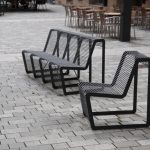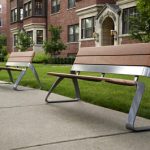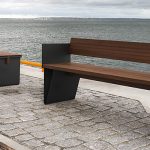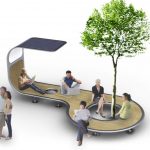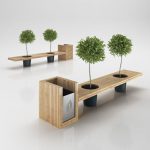As an Amazon Associate I earn from qualifying purchases.
Urban furniture has undergone significant evolution over the years, reflecting the changing needs and preferences of city dwellers. From simple benches and trash bins to elaborate structures and installations, urban furniture plays a crucial role in shaping the identity and functionality of public spaces.
The earliest forms of urban furniture were basic and utilitarian, designed primarily to provide seating and facilitate waste disposal. Benches made of wood or stone were common in parks and squares, while trash bins were placed strategically to keep the streets clean. These fixtures served their purpose effectively but lacked aesthetic appeal and innovation.
As cities grew and urban design became a prominent consideration, urban furniture began to evolve in both form and function. Designers started experimenting with new materials and styles, incorporating elements of art and functionality into their creations. The result was a new generation of urban furniture that not only provided practical solutions but also added value to the urban landscape.
One of the most significant developments in the evolution of urban furniture is the emphasis on sustainability and environmental consciousness. With the growing concern for climate change and resource depletion, designers are now incorporating eco-friendly materials and technologies into their designs. Solar-powered benches, recycled plastic chairs, and green walls are just a few examples of how urban furniture is adapting to meet the demands of a more sustainable society.
In addition to sustainability, the concept of placemaking has also influenced the evolution of urban furniture. Placemaking involves creating vibrant and inviting public spaces that encourage community engagement and social interaction. To achieve this, designers are now developing furniture that is versatile, interactive, and adaptable to different activities and events. This includes movable seating arrangements, modular structures, and interactive installations that invite people to gather, relax, and interact with their surroundings.
Furthermore, technology is playing an increasingly important role in shaping the future of urban furniture. Smart benches with built-in charging stations, Wi-Fi connectivity, and sensor-based monitoring systems are becoming more common in urban settings. These innovations not only enhance the functionality of urban furniture but also create new opportunities for data collection and analysis to improve urban planning and management.
Overall, the evolution of urban furniture reflects the dynamic and multifaceted nature of contemporary urban design. From traditional benches and trash bins to cutting-edge, technology-driven installations, urban furniture continues to evolve and adapt to the changing needs and preferences of city dwellers. As cities continue to grow and evolve, urban furniture will undoubtedly play a pivotal role in shaping the urban landscape and enhancing the quality of life for residents and visitors alike.
Amazon and the Amazon logo are trademarks of Amazon.com, Inc, or its affiliates.
 yonohomedesign.com Garden and Interior Design Ideas
yonohomedesign.com Garden and Interior Design Ideas


